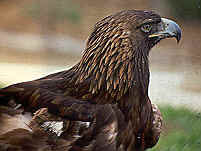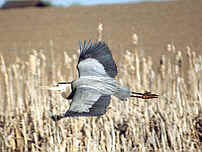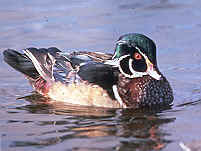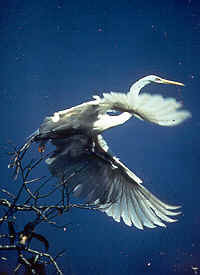Birding
![]()
 |
 |
 |
 |
 |
 |
Over 430
species of wildlife have been identified in the Klamath Basinís six
National Wildlife Refuges.
In the fall and spring, millions of migrating ducks, geese and swans
descend from the Pacific Flyway for rest and nourishment. Their presence
is an open invitation to larger predators. A winter population of 1,000
bald eagles begins arriving in the basin by mid-February, feeding on
injured, sick and dead waterfowl.
The broad range of habitat within the refuges supports an equally broad
range of wildlife: cranes, pelicans, marmots, owls, otters, deer, sheep,
porcupine and an estimated 263 bird species.
For more information on our wildlife areas,
please click on a link
below:
Lower Klamath National Wildlife Refuge
Upper Klamath National Wildlife Refuge
Bear Valley National Wildlife Refuge
Klamath Marsh National Wildlife Refuge
Tulelake National Wildlife Refuge
Clear Lake National Wildlife Refuge
Klamath Basin
For Winter Birds
by Betty Burridge
One of the nation's most glorious and exciting mid-winter birding
destinations lies within an easy day's drive of Sonoma County
California. It is the Klamath Basin on the Oregon border of northeastern
California, a congregating place for Bald and Golden Eagles, Tundra
Swans, numerous hawk and falcon species, and a great variety of
waterfowl.
Two national wildlife refuges, Lower Klamath Basin NWR and Tule Lake
NWR, are easily accessible by well-marked roads and trails. This is a
photographer's paradise, with dramatic weather patterns and great flocks
of birds occasionally rising to wheel through the skies. To hear the
extraordinary sounds of these thousands of birds is, in itself, a
haunting and fascinating experience.
Bald Eagles and other raptors are drawn to the region in December, when
most of the open water freezes, crowding the waterfowl into the
remaining open water areas where sick or injured birds become easy prey.
Great numbers of swans also are seen in the Basin. While the vast
majority are Tundra Swans, birders should watch and, especially, listen
closely for the sonorous single or double trumpet-like call signaling
the presence of the rare Trumpeter Swan. Sightings of these birds should
be reported to the Trumpeter Swan Society.
At Tule Lake NWR Headquarters, birders will find extensive interpretive
and educational material, along with recent bird census numbers, public
telephones, and clean rest rooms. There is a log for reporting bird
sightings, so you can find out the latest news on rarities or your
favorite birds. On occasion, porcupines have been seen in the trees
lining the road near the Headquarters. Great Horned Owls roost in the
cliffs to the west, and raptors soar on the updrafts created by the
warmth of the morning sun on the rocks.
The Klamath Basin can be a wonderful birding area all year long, and the
breathtaking congregation of winter birds is usually present from
December through March.
On the four-day Presidents' Weekend each year, Klamath Falls Oregon
hosts a Bald Eagle Conference, for information, please call (541)
883-5732.
To reach the Klamath Basin: Plan on at least six hours of driving time
from Santa Rosa to Tule Lake. Go north on I-5 to the Highway 97 exit at
Weed and proceed north-east through the small town of Dorris. Three
miles past Dorris go east on Highway 161 , which is also called State
Line Road, along the wetlands of the Lower Klamath National Wildlife
Refuge. Be sure to pull well off the pavement when you stop to view the
birds, as fast-moving 18-wheelers make up much of the traffic on that
seemingly quiet two-lane road. After about 14 miles on Highway 161, turn
right on Hill Road, which leads to the refuge headquarters and dirt
roads out onto the refuge.
A Great birding
link:
http://www.klamathbirdingtrails.com/